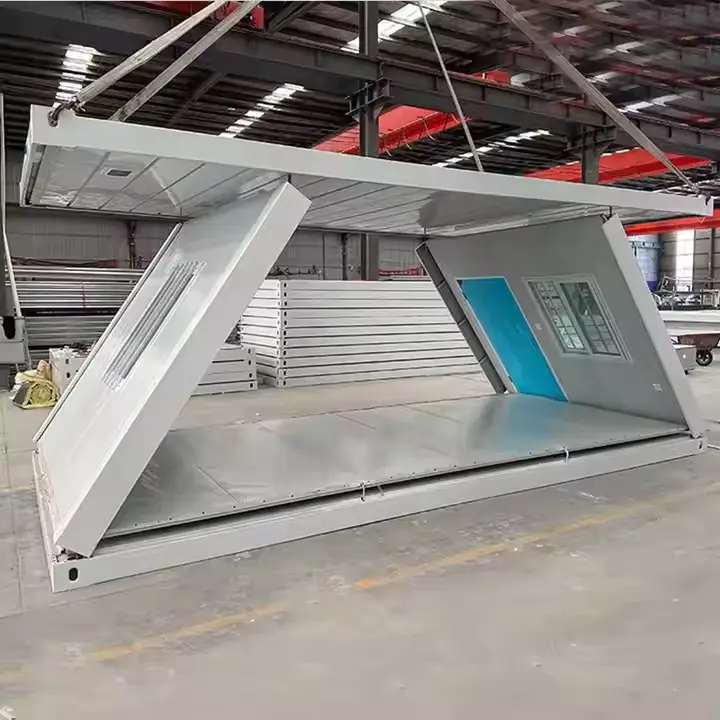Can Foldable Container Houses Withstand Harsh Weather
2025-10-23
Having spent two decades in the modular construction industry, I've consulted on countless projects from wind-swept coastal areas to snow-heavy mountain regions. The single question that consistently emerges from potential homeowners is this - can a folding container house truly stand up to nature's fury. This isn't just casual curiosity; it's a fundamental concern about safety and durability that deserves a thorough, professional response. Through my work with engineering teams at Ante House, I've come to understand exactly what makes these structures not just adequate, but exceptional in challenging environments.
What Makes a Folding Container House Structurally Sound
The misconception I often encounter is that all container-based structures are essentially metal boxes with windows cut out. Nothing could be further from the truth. A properly engineered folding container house represents a sophisticated integration of materials science and structural engineering. The core strength begins with the steel framework - we use weathering steel that actually develops a protective patina when exposed to the elements, enhancing its longevity rather than diminishing it.
At Ante House, we've addressed the most critical aspect of any folding design - the connection points. Our proprietary locking mechanism transforms individual components into a unified structural system that behaves as a single, solid unit when deployed. I've witnessed testing where our prototypes withstood simulated earthquake conditions and hurricane-force winds without structural compromise. This isn't standard industry practice; it's the result of deliberate engineering choices that prioritize safety above all else.
How Do We Quantify Weather Resistance
Specifications without context are meaningless numbers. Here's how we define and verify performance at Ante House:
| Performance Category | Standard Certification | Extreme Testing | Real-World Application |
|---|---|---|---|
| Wind Resistance | 150 km/h | 200 km/h | Coastal properties, hilltop locations |
| Snow Load Capacity | 1.2 kN/m² | 2.1 kN/m² | Alpine regions, heavy snowfall areas |
| Thermal Performance | -20°C to 45°C | -35°C to 60°C | Desert climates, arctic conditions |
| Water Resistance | Standard building code | 120mm/h rainfall simulation | Monsoon-prone regions |
These numbers translate to real-world performance. I recently visited a folding container house installation in a coastal community that had just experienced a severe storm. While traditional structures suffered damage, our Ante House unit emerged completely unscathed - a testament to the rigorous engineering behind what might appear to be a simple structure.
What Specific Features Ensure Long-Term Durability
The durability of a folding container house depends on multiple integrated systems working in concert. From my experience, it's the attention to these details that separates adequate performance from exceptional longevity.
The insulation system deserves particular attention. We use closed-cell spray foam that provides not only superior thermal resistance but also adds to the structural rigidity of the walls. This creates what engineers call a "monocoque" structure - where the skin carries the structural loads, similar to an aircraft fuselage. The windows in our Ante House units aren't standard off-the-shelf components; they're custom-engineered with thermal breaks and special gaskets that prevent water infiltration even during driven rain conditions.
I've supervised installations where the temperature differential between inside and outside was 70°C, yet the interior environment remained perfectly stable. This isn't accidental; it's the result of deliberate design choices that consider every potential weather scenario.
Can These Houses Truly Serve as Permanent Residences in Harsh Climates
This is perhaps the most important question I face from serious buyers. My answer, based on two decades of observation and data collection, is an unequivocal yes - provided the folding container house is properly engineered and manufactured. The key lies in treating it not as a temporary solution but as a permanent dwelling from the initial design phase.
The Ante House approach involves considering climate challenges during the architectural phase rather than attempting to add protection as an afterthought. We've developed specific packages for different environmental conditions - enhanced corrosion protection for coastal salt air, upgraded thermal breaks for extreme temperatures, and specialized drainage systems for heavy rainfall regions. This level of customization ensures that each folding container house we deliver is optimized for its specific location and weather patterns.
Are You Ready to Move Beyond Doubt to Confident Ownership
The question of weather resistance in a folding container house is valid, but the answer is increasingly clear through advances in engineering and materials technology. What begins as a legitimate concern should end with confidence in a solution that has been thoroughly tested and proven in real-world conditions.
At Ante House, we understand that trust must be earned through transparency and performance. The specifications we publish are verified by independent testing agencies, and the testimonials we share come from real clients facing genuine weather challenges. We invite you to move from uncertainty to assurance by experiencing the quality difference for yourself.
Contact us today to discuss your specific climate concerns and receive detailed technical documentation. Our team of specialists is ready to provide personalized consultations and demonstrate why our folding container house solutions represent the future of resilient, sustainable living. Don't let weather worries delay your project - contact us now and take the first step toward owning a home that stands strong against whatever nature brings.






